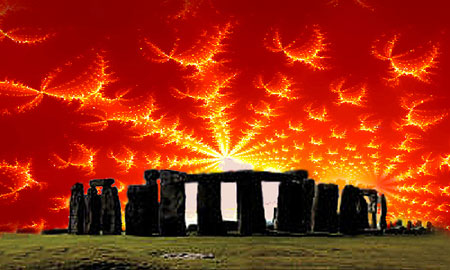The
Vernal Equinox

Spring
Forward, Look Back
Celebrations
of Spring were born of Earth's natural cycles of light and darkness, of life and
death. Ancient cultures took note of the change in seasons and made offerings
to their local gods to receive blessings for the year.
On
March 20, 2008, at precisely 1:37 A.M. EDT the Sun enters Aries – the first
sign of the zodiac – marking the sacred moment
known as the Vernal Equinox.
For the Southern Hemisphere, this is the moment of the Autumnal Equinox. Translated
literally, equinox means "equal night." Because the sun is positioned
above the equator, day and night are about equal in length all over the world
during the equinoxes.
Also
known as:
Alban
Eilir, Eostar, Eostre, Feast of Annunciation of the Blessed Virgin Mary, Festival
of Trees, Lady Day, NawRuz, No Ruz, Ostara, Ostra, Rites of Spring.
Many
early peoples celebrated for the basic reason that their food supplies would soon
be restored. The date is significant in Christianity because Easter always falls
on the first Sunday after the first full moon after the vernal equinox. It is
also probably no coincidence that early Egyptians built the Great Sphinx so that
it points directly toward the rising Sun on the day of the vernal equinox. Its
ancient linkages to sun and moon worship are obvious.
Christianity
and other religions associate three themes with the vernal equinox:
~
Conception and pregnancy leading to birth on the winter solstice.
~
Victory of a god of light (or life, rebirth, resurrection) over the powers of
darkness (death).
~
The descent of the goddess or god into the underworld for a period of three days.
This is such a popular theme among religions that mythologists refer to it as
"the harrowing of Hell."
In
an ancient Greek religion, Cybele, the Phrygian fertility goddess, had a consort
who was believed to have been born via a virgin birth. He was Attis, who was said
to have died and been resurrected each year during the period MAR-22 to MAR-25;
i.e. at the time of the vernal equinox in the Julian calendar.
Wherever
Christian worship of Jesus and Pagan worship of Attis were active in the same
geographical area in ancient times, Christians "used to celebrate the death
and resurrection of Jesus on the same date; and pagans and Christians used to
quarrel bitterly about which of their gods was the true prototype and which the
imitation." Since the worship of Cybele was brought to Rome in 204 BCE, about
250 years before Christianity, it is obvious that if any copying occurred, it
was the Christians that copied the traditions of the Pagans.
Written
in Early Spring
I
heard a thousand blended notes
While in a grove I sate reclined,
In that
sweet mood when pleasant thoughts
Bring sad thoughts to the mind.
To
her fair works did Nature link
The human soul that through me ran;
And
much it grieved my heart to think
What Man has made of Man.
Through
primrose tufts, in that sweet bower,
The periwinkle trail'd its wreaths;
And
'tis my faith that every flower
Enjoys the air it breathes.
The
birds around me hopp'd and play'd,
Their thoughts I cannot measure,—
But the least motion which they made
It seem'd a thrill of pleasure.
The
budding twigs spread out their fan
To catch the breezy air;
And I must
think, do all I can,
That there was pleasure there.
If
this belief from heaven be sent,
If such be Nature's holy plan,
Have I
not reason to lament
What Man has made of Man?
-
William Wordsworth -
